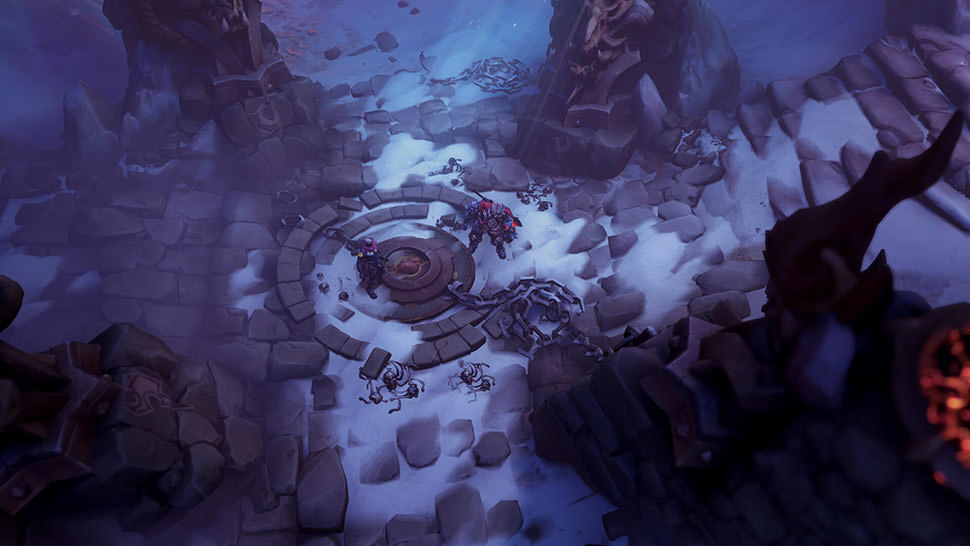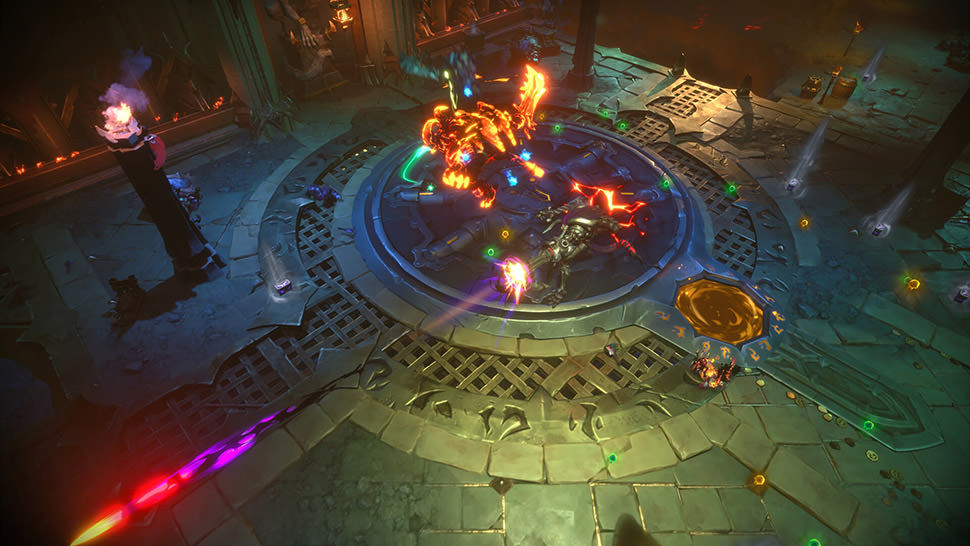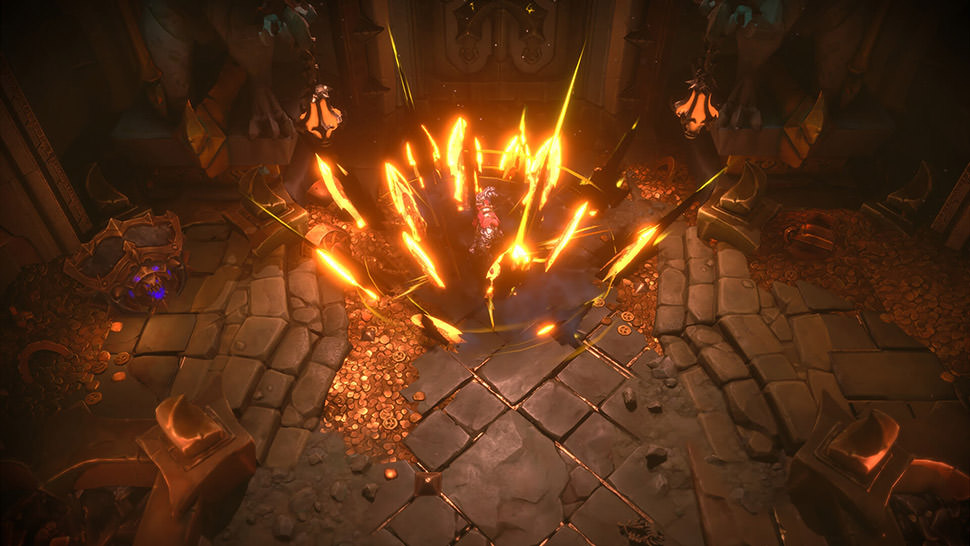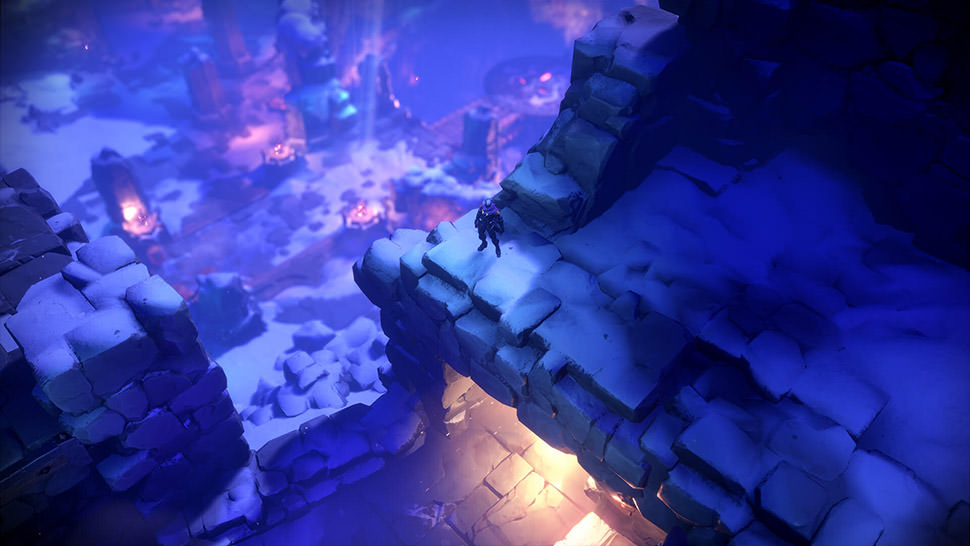Darksiders Genesis Review

 By Kevin Mitchell | Feb 24, 2020
By Kevin Mitchell | Feb 24, 2020
Serving as a spin-off prequel to a decade-old series, Darksiders Genesis introduces the final and fourth member of the Horsemen of the Apocalypse, the dual gun-toting Strife. For the first time in the Darksiders franchise, a Horseman isn't alone, as you team up with his brother War, the protagonist from the first game. Although featuring an isometric perspective similar to what you'd find in action RPGs such as Diablo, Darksiders Genesis still feels and plays quite like the hack-and-slash franchise that fans love.

If you were concerned that the new perspective might alter the gameplay formula, fret not, as Genesis feels quite close to the original title in terms of combat mechanics. The ability to play two different characters is new for the series, and if you are playing alone, you can freely swap between them. War and Strife each come with their own unique fighting style, giving players plenty of options between the melee-focused approach of War and the long-range style of Strife. As he was in the first game, War's attacks are methodical, slower-paced, but pack a punch, easily devastating enemies of all sizes. Being able to block and dash gives him plenty of defensive options to get close to foes and wreak havoc with his massive sword.
The more agile Horseman, Strife, uses dual guns, giving an almost twin-stick shooter quality to his character. When up close and personal, he can dish out melee combos that end with him dashing away to put some distance between himself and his foes to unload with his guns. Each character has their own set of abilities and enhancements, such as a charge shot for Strife that can pierce through multiple foes, and War's ability to release a massive wave of energy through the ground. Both characters are always viable options for encounters, so it is up to you how you'll want to tackle the hordes of enemies and bosses you'll face. Early on throughout the campaign, I frequently swapped between them, but by the end, I had developed a favorite (Strife) and used him for the rest of the game.

As you always have the choice of playing two characters, Darksiders Genesis includes both local and online cooperative options; however, they are quite limited. Local multiplayer uses split-screen support, letting you play through the game with a friend without limiting you to always being on the same screen. Online, my favorite way to play cooperative titles, does not include matchmaking at all. Instead, you'll have to invite a friend directly or have them request to join at specific co-op stones scattered throughout the environments. Souls and other items are split between the players, so you don't have to fight for any pickups. Some puzzles may require proper timing coordination between players to pull levers simultaneously and more. Of course, these puzzles become more complicated as you progress through the narrative. When you consider how the two characters' playstyles complement each other, co-op is by far the definitive way to play the game.

Besides the regular helping of blue souls to purchase items/upgrades from Vulgrim, green orbs to replenish health, and yellow ones for wrath, you'll come across creature cores that have a chance of dropping from foes. These bits of souls can be slotted into the skill tree to grant bonuses, perks, and stat improvements. There are 30 possible minor creature core slots and eight major creature core slots. Generally, the minor cores are from the smaller foes you fight throughout, and the major ones are attached to more massive bosses. For example, fallen hounds drop a minor core which, when slotted, increases attack power. Others may grant bonus souls, increase max health, and boost the drop rate of various items. The major cores can provide a boost to the characters by granting more substantial gains for attack power, enabling War to block additional damage, and even leaving a trail of lava after dashing.
The area maps show current missions, both main and side, and a laundry list of collectibles and points of interest on the right side of the screen. However, there isn't any marker for quest locations or even for yourself on the map. Instead, the current section of the map glows, letting you know the general vicinity of your characters, but since it shows the locations of chests and items, it's up to you to figure out where you are in relation to them.

Airship Syndicate handled development for Darksiders Genesis, creators of one of my favorite RPGs from this generation, Battle Chasers: Nightwar. Although not as highly budgeted as previous titles, the game is beautifully crafted, giving the environments an almost painterly quality. Sure, animations aren't spectacular, but they're serviceable given the isometric perspective. Even with an SSD playing on a PlayStation 4 Pro, there are moments of hitching/stuttering when moving between certain areas, but nothing that became a gameplay hindrance.
Simply Put
Darksiders Genesis may be one of the best games in the Darksiders franchise. The banter between War and Strife works on so many levels, and the added co-op support is the icing on the cake. Yes, I would have preferred to see matchmaking and positioning on the map, but neither are deal-breakers. The camera doesn't always cooperate with some of the platforming sections, but I mostly enjoyed the 15 hours spent playing through the campaign. You are free to replay any of the 16 chapters to collect any missing items/cores, and the arena mode lets you take your characters into battle against ten grueling waves of enemies.
Note: Darksiders Genesis was reviewed on PlayStation 4. A digital copy of the game was provided by the publisher/developer.




